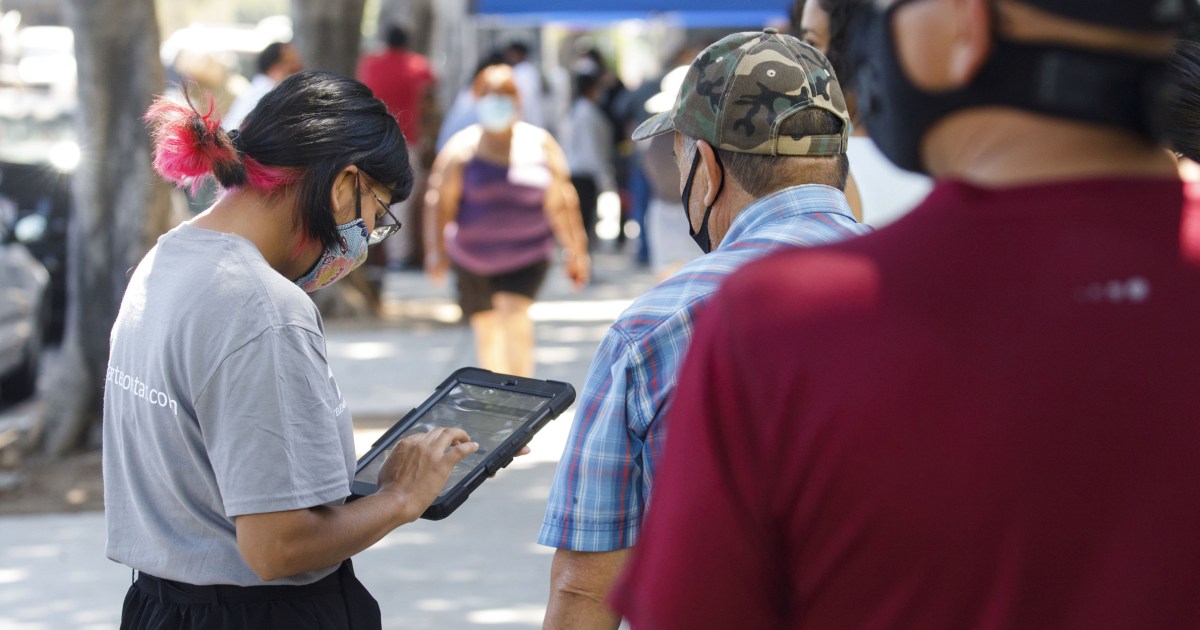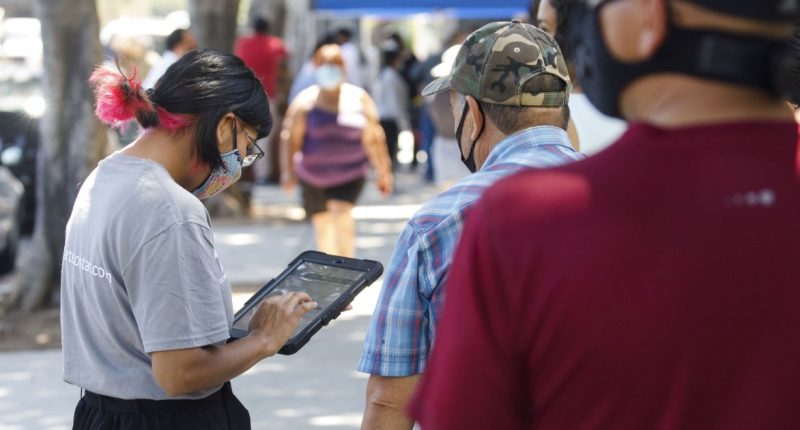
For the first time, Hispanic or Latino is listed as one race/ethnicity category and people of Middle Eastern or North African descent will have their own checkbox under new race and ethnicity standards adopted by the Biden administration.
Up to now, Hispanics had a two-part question for their identity: They were asked whether they were Hispanic or Latino and then asked to pick a race of white, Black, American Indian or some other race.
The change now uses one question for race and ethnicity and allows people to check as many as apply to their identity. Each category has subcategories with examples that may apply and room for those that may not be listed.
The addition of a Middle Eastern or North African, or MENA, identifier would allow some 7 million to 8 million people to no longer have to identify as “white” or “other” on the census and other forms in which such data is collected.
The changes are only the second update by the federal government to categories for data on the American population. The update — the last was in 1997 — of standards used by the federal government for the census and other agencies is meant to better capture the expanding multicultural identity of the country.
“These updated standards are going to help us create more useful, accurate and up-to-date federal data on race and ethnicity,” said an official with the Office of Management and Budget, who spoke to reporters Tuesday on the condition that the person not be identified.
“And these revisions will enhance our ability to compare information and data across federal agencies and also understand again how our federal programs are serving a diverse America,” the official said.
The changes were effective Thursday and agencies have 18 months to devise plans for complying and then up to five years to put those plans in place, though some are likely to do so sooner, the OMB said.
The newest standards reflect results from the 2020 census that showed that most Hispanics did not identify their race as white, Black or Asian, and instead were more likely to choose “some other race” on the decennial survey or to check “two or more races.”
Research showed the two-part question is confusing and since 1980, nonresponse to the race question has increased, the OMB stated in an explanation of its recommendations. On the 2020 census, 4 in 10 Hispanics, or 42%, marked “some other race. A third selected two or more racial groups and 20% chose white as their race, according to a Pew Research Center analysis.
The two new categories will have subcategories; the ones listed for Hispanic or Latino are “Mexican, Puerto Rican, Salvadoran, Cuban, Dominican, Guatemalan etc.”
For the Middle Eastern or North African category, the subcategories listed as “Lebanese, Iranian, Egyptian, Syrian, Iraqi, Israeli etc.”
Some in the Afro Latino or Black Latino population had raised concerns that the combined question may dilute their visibility. But the OMB said its research showed Afro Latino populations estimates were slightly higher with a combined question that also provides detailed checkboxes and write-in fields.
However, the working group recommended more research on the issue because about half of Afro Latinos interviewed while researching the issue for the update chose only Hispanic or Latino on a combined question, even though they selected Hispanic or Latino and Black or African American categories when they were recruited for the interviews.
Although the standards are intended for federal agencies, the effect goes beyond that realm. Many researchers, local and state governments and nonprofit groups follow the standards that also shape policy, effect representation in government through redistricting and, in some ways, societal perspectives.
The revisions were developed by a working group made up of career staff from 35 agencies that received more than 20,000 comments after first recommending the changes in January 2023, according to the OMB. The working group held 94 “listening sessions,” three virtual town halls and a tribal consultation on its proposed revisions, the agency said.
In addition, the OMB said it is creating the Interagency Committee on Race and Ethnicity Statistical Standards to continue research, because the process of updating the standards “showed that racial and ethnic identities, concepts and data needs continue to evolve.”
Along with researching and capturing accurate data on Afro Latinos, it will also consider collecting data on descendants of people enslaved in the U.S., among other topics. The OMB said groups consulted on identification of descendants of slaves did not agree on whether or how to collect the information.
The others race and ethnicity categories are American Indian or Alaska Native, Asian, Black or African American, Middle Eastern or North African, Native Hawaiian or Pacific Islander, and White.
For more from NBC Latino, sign up for our weekly newsletter.
Source: | This article originally belongs to Nbcnews.com










